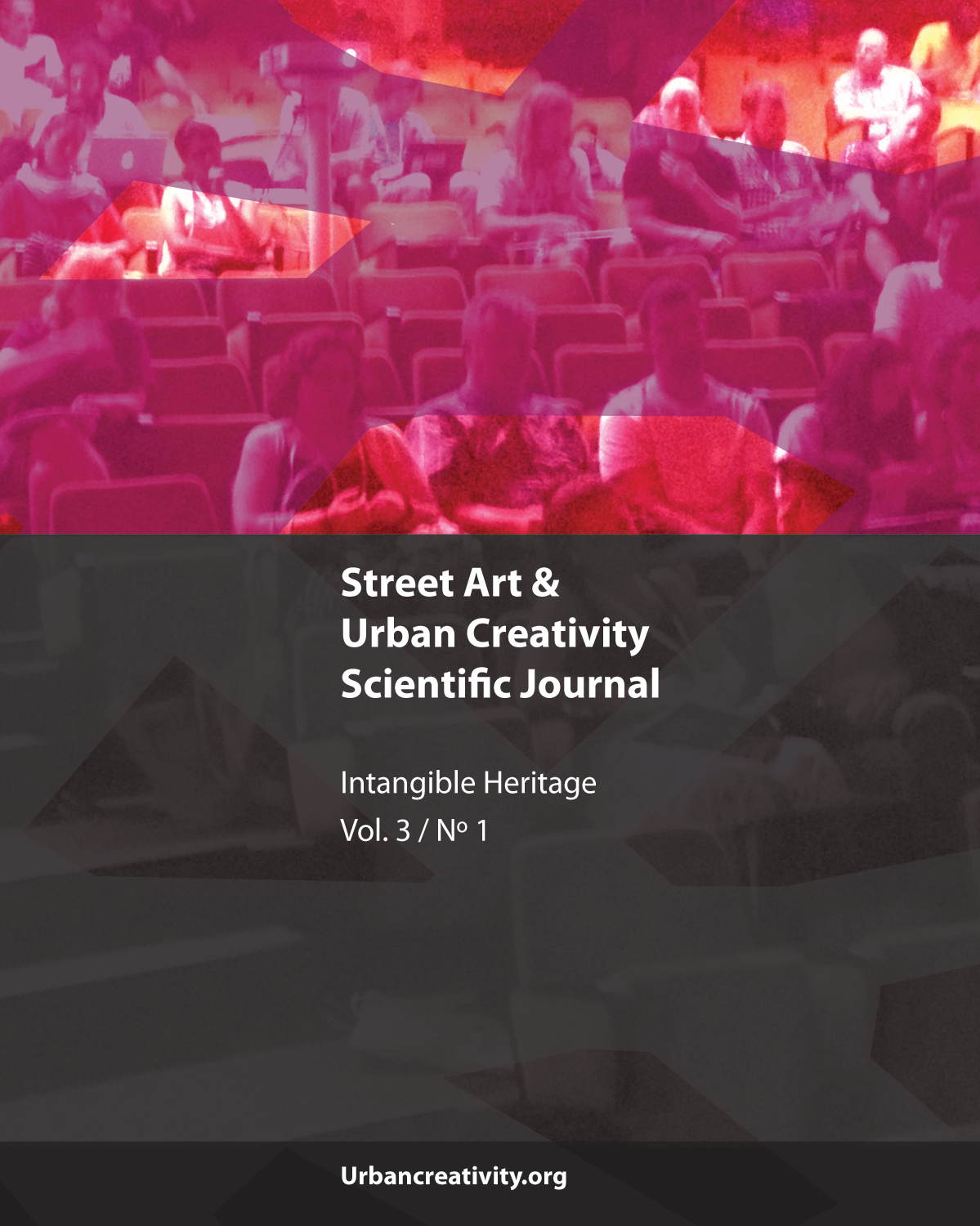Negotiating the tangible and the intangible:
A case for street art festivals
DOI:
https://doi.org/10.25765/sauc.v3i1.59Keywords:
Street Art Festivals, Street Art World, Institutional Theory, Intangible, New MediaAbstract
Street art in the past decade or so has witnessed development in the form of the street art festivals that have sprung up across the globe. These festivals bring artists, street art enthusiasts, art historians, and the public together in the celebration and creation of street art. Practicing art in this format can arguably be seen as replacing the art institutions that often attempt to represent and commercially engage with this art, thus proving to be antithetical to its systems. Street art is characterised by an inherent contradiction that lies within it – while on one hand it is tangible due to its unregulated availability to people for aesthetic experience, both visually and physically, it is also intangible due to its ephemerality and unstructured manner of recording history. This article makes a case for street art festivals as representation of what may be called a ‘Street art world,’ that allows for documentation and reflection of the art movement that began in the late 1960s and the 1970s.
Downloads
Global Statistics ℹ️
|
159
Views
|
42
Downloads
|
|
201
Total
|
|
Downloads
Published
How to Cite
Issue
Section
License
Those authors who publish in this journal accept the following terms:
-
Authors retain copyright.
-
Authors transfer to the journal the right of first publication. The journal also owns the publishing rights.
-
All published contents are governed by an Attribution-NoDerivatives 4.0 International License.
Access the informative version and legal text of the license. By virtue of this, third parties are allowed to use what is published as long as they mention the authorship of the work and the first publication in this journal. If you transform the material, you may not distribute the modified work. -
Authors may make other independent and additional contractual arrangements for non-exclusive distribution of the version of the article published in this journal (e.g., inclusion in an institutional repository or publication in a book) as long as they clearly indicate that the work was first published in this journal.
- Authors are allowed and recommended to publish their work on the Internet (for example on institutional and personal websites), following the publication of, and referencing the journal, as this could lead to constructive exchanges and a more extensive and quick circulation of published works (see The Effect of Open Access).













